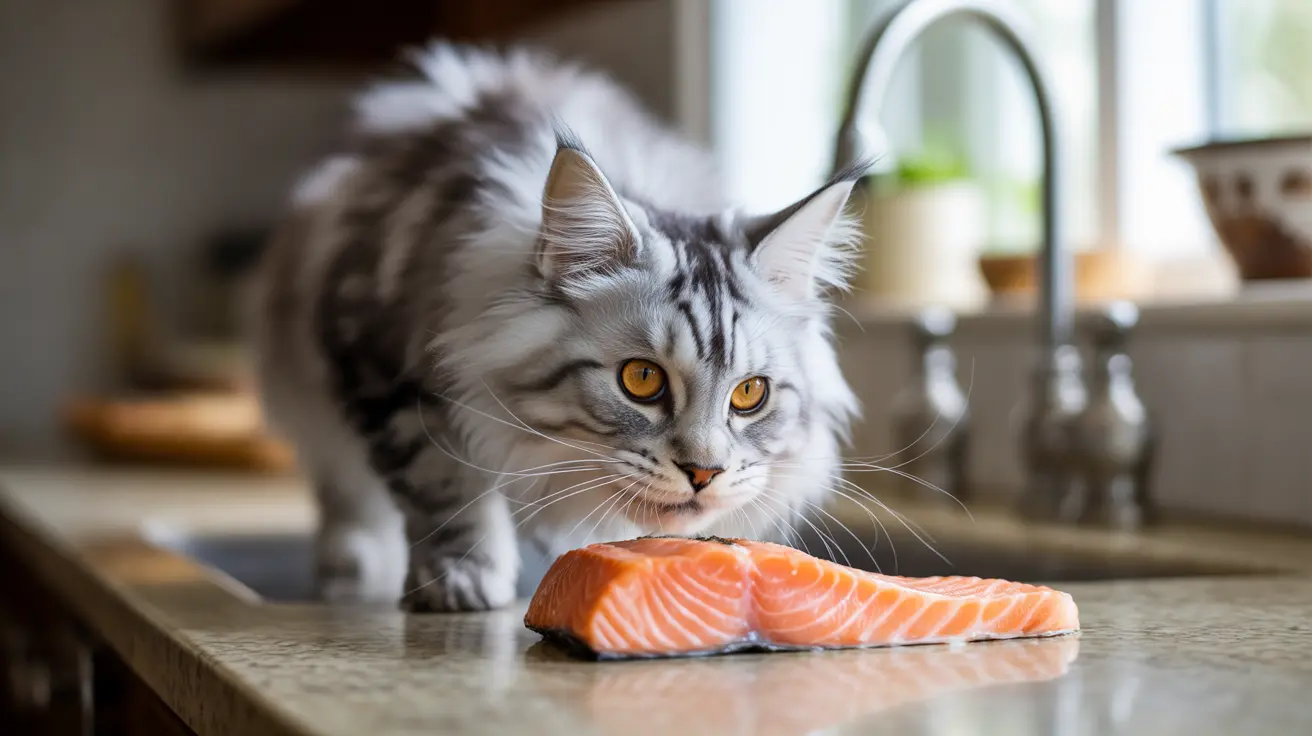Understanding Cats and Seafood: The Basics
Despite popular belief, seafood isn't a natural part of most cats' diets in the wild. Cats are obligate carnivores, meaning they require nutrients found primarily in animal tissues. While fish and shellfish can provide some of these nutrients, they don't offer the complete nutritional profile cats need for optimal health.
When properly prepared and served in moderation, certain types of seafood can be a healthy treat for cats, providing beneficial proteins and omega-3 fatty acids. However, it's crucial to understand both the benefits and potential risks.
Safe Seafood Options for Your Cat
Some seafood choices are safer than others for feline consumption. The following options can be offered as occasional treats:
- Cooked salmon (plain, deboned)
- White fish like cod or haddock
- Small amounts of cooked shrimp
- Cooked tuna (in moderation)
Always ensure any seafood offered is thoroughly cooked, unseasoned, and free from bones, shells, or other potential hazards.
Health Risks and Safety Concerns
Feeding seafood to cats comes with several important considerations:
- Mercury contamination risks, especially in larger fish
- Potential allergic reactions
- Thiaminase in raw fish that can destroy essential B vitamins
- Bacterial contamination concerns
- Risk of choking on bones or shells
Additionally, regular consumption of certain types of seafood can lead to health issues over time, including mercury poisoning or nutritional deficiencies.
Proper Preparation Guidelines
To safely prepare seafood for your cat:
- Choose fresh, high-quality seafood
- Cook thoroughly without seasonings or oils
- Remove all bones, shells, and skin
- Serve in small portions at room temperature
- Never offer raw or undercooked seafood
Frequently Asked Questions
Can cats safely eat seafood like fish and shellfish, and which types are best?
Yes, cats can safely eat certain types of seafood when properly prepared. The best options include cooked salmon, white fish, and small amounts of shrimp. Always remove bones and shells, and serve plain, cooked seafood without seasonings or additives.
How should I prepare seafood to make it safe for my cat to eat?
Thoroughly cook all seafood without seasonings, oils, or marinades. Remove all bones, shells, and skin. Serve at room temperature and in small portions. Never feed raw or undercooked seafood to your cat.
What are the health risks for cats eating raw or canned seafood?
Raw seafood can contain harmful bacteria and parasites, while canned seafood often contains excessive sodium and potentially harmful additives. Raw fish also contains thiaminase, an enzyme that destroys essential B vitamins in cats.
Can feeding fish regularly cause nutritional or health problems in cats?
Yes, regular fish consumption can lead to several issues, including mercury poisoning, thiamine deficiency, and an unbalanced diet. Some cats may also develop allergies or sensitivities to seafood.
How often can I give my cat seafood treats without harming their diet?
Seafood should be limited to an occasional treat, not exceeding 10% of your cat's total diet. Serve small portions once or twice a week at most, while maintaining a balanced, complete cat food as their primary diet.
Conclusion
While cats can eat certain types of seafood safely, it's essential to approach it as an occasional treat rather than a dietary staple. Always prepare seafood properly, serve in moderation, and monitor your cat for any adverse reactions. When in doubt, consult with your veterinarian about incorporating seafood into your cat's diet, especially if your pet has existing health conditions or dietary sensitivities.






